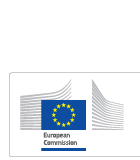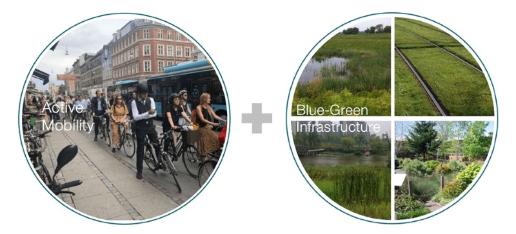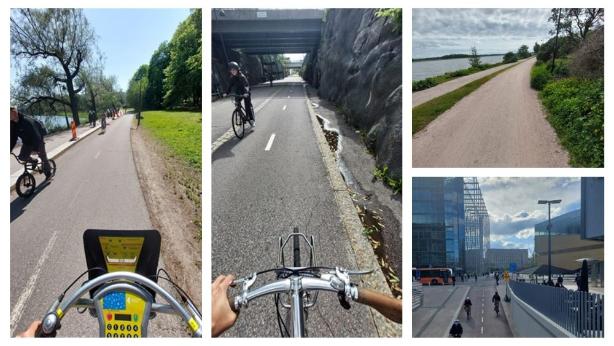
Blog post #8 (November 2025)
Active mobility and Blue-Green infrastructure: lessons from Helsinki
Francesco Fonzino | University College Dublin

Francesco Fonzino is a doctoral researcher in the C-NEWTRAL program at the University College Dublin (UCD), founded by the prestigious Marie Skłodowska-Curie Doctoral Fellowship programme. Academically, he holds a Master's degree in Sustainable Cities from Aalborg University in Copenhagen and a Bachelor’s degree in Urban Planning from the University of Florence. Professionally, he has 6 years of experience working for an engineering firm in Italy as a project manager, providing digital technologies and services to facilitate the operations of telecommunication, Energy and Utility infrastructures. Under the supervision of Dr Aura Istrate (UCD), Prof. Francesco Pilla (UCD), and Prof. Sirkku Juhola (University of Helsinki), Francesco’s research focuses on integrating active mobility with Blue-Green Infrastructure, examining city governance structures, and assessing coupled impacts to facilitate achieving climate neutrality in European cities.
Could streets designed for people and nature be the secret allies in Europe’s race to climate neutrality?
The European Commission’s 2050 climate-neutrality target demands coordinated, cross-sectoral action, including a 55% reduction in greenhouse gas (GHG) emissions by 2030 ((opens in a new window)European Commission, 2019). The transport sector, responsible for around 25% of the EU’s GHG emissions, must reduce its emissions by 90% ((opens in a new window)European Commission, 2019). Additionally, it must address ambient air pollution, which is linked to over 4.2 million premature deaths annually ((opens in a new window)World Health Organization), a pressing public health issue. Active mobility, which refers to human-powered transportation, encompasses activities such as walking and cycling, two mitigation strategies that are clean, affordable, and promote health while easing congestion and reducing noise (European Commission, (opens in a new window)2021, (opens in a new window)2023; (opens in a new window)Luo et al., 2022).
Parallel to this, the expansion of Blue-Green Infrastructure (BGI) has emerged as a key adaptation strategy for enhancing resiliency, biodiversity, and the provision of ecosystem services in urban areas ((opens in a new window)European Commission, 2024). BGI, on the other hand, refers to networks of natural and semi-natural areas (such as parks, forests, wetlands, green roofs, or even street rain gardens) that deliver ecosystem services, including biodiversity support, flood mitigation, and cooling (European Commission, (opens in a new window)2013, (opens in a new window)2015).

Figure 1: Representation of active mobility and Blue-Green infrastructure
In other words, active mobility enables people to move sustainably, while BGI promotes nature in urban areas to create more liveable and climate-resilient cities. When well-integrated, active mobility networks can enhance BGI connectivity, improving, for instance, biodiversity. Meanwhile, BGI can address safety-related concerns by improving the quality of active mobility infrastructure, encouraging a modal shift from motorised vehicles. Yet, both systems increasingly compete for limited urban space, which, together with existing knowledge gaps, poses challenges for adopting integrated solutions. Therefore, my research aims to address these challenges to facilitate infrastructure integration and maximise co-benefits, thereby fostering healthy, climate-resilient urban environments.
Helsinki: A Living Laboratory
The City of Helsinki aims to become climate-neutral by 2040, offering an inspiring case. The city is already a leader in active mobility:
- Walking accounts for 41% of trips, while cycling makes up 11%, with the intention to reach at least 20% for the latter ((opens in a new window)Helsingin kaupunki, 2024).
- Its cycling network stretches over 1,300 km, supported by advanced winter maintenance, which ensures that 140 km remain accessible year-round (City of Helsinki, (opens in a new window)2020, (opens in a new window)2025)
- The city’s bike-sharing scheme counts 4,600 bikes at 460 stations, enabling millions of short trips each year.
- Accessibility is equally strong on foot, with approximately 93% of residents able to reach essential services within a 15-minute walk ((opens in a new window)University of Helsinki, 2024).
Nature is just as central.
- Between 34% and 55% of Helsinki’s land area is covered by green spaces, including forests, parks, meadows, and conservation areas, amounting to around 110–190 m² per person ((opens in a new window)City of Helsinki, 2025).
- The ecological network encompasses urban forests, meadow networks, and “blue” features, including lakes, streams, and coastal waters.
- A “green factor” tool, embedded in building regulations since 2023, ensures that new developments contribute to this network through green roofs, pollinator habitats, and biodiversity-friendly design ((opens in a new window)City of Helsinki, 2021).
- Residents have a physical proximity to green spaces within 300 m to 500 m buffers ((opens in a new window)Heikinheimo, Tiitu, & Viinikka, 2023).
Walking or cycling in Helsinki often means sharing space with wildlife, hearing birdsong, or crossing through urban forests like Keskuspuisto (Central Park). In this way, active mobility and BGI intersect in everyday life, encouraging users to adopt them.
During my research secondment at the University of Helsinki, under the guidance of (opens in a new window)Prof. Sirkku Juhola and (opens in a new window)Dr Janina Käyhkö, I had the opportunity to experience these systems firsthand, cycling and walking along well-connected routes and exploring green corridors.

Figure 2: Helsinki streets; source: the author.
However, while active mobility and BGI could be perfect allies, research shows that in many European cities, short, direct active mobility routes often lack greenery, while greener alternatives require detours ((opens in a new window)Willberg et al., 2024). This misalignment is one of the many consequences of a lack of systematic infrastructure integration. Therefore, over the coming months, I will engage and collaborate with local stakeholders, including public authorities, planners, NGOs, city officials, consultants, and researchers, to gain a deeper understanding of governance mechanisms that can unlock system integration at the city scale. This inquiry will not stop in Helsinki: Dublin and Bologna will serve as additional case studies to capture different cultural, political, and environmental contexts.
To conclude, Helsinki demonstrates that investing in both walking and cycling infrastructure, as well as rich ecological networks, can result in a healthier, more sustainable, and more resilient city. However, achieving Europe’s climate-neutral future will require moving beyond isolated projects toward systemic integrated transformations. By coupling human-powered mobility with nature-based solutions, cities can multiply co-benefits, from cleaner air to stronger biodiversity, making urban life not only more sustainable but also more enjoyable.
Acknowledgements
If you are interested in sharing ideas, collaborating, or discussing the future of active mobility and BGI integration, I would be delighted to hear from you. You can reach me at francesco.fonzino@ucd.ie or on LinkedIn (https://www.linkedin.com/in/francescofonzino/).
Finally, I would like to thank the C-NEWTRAL colleagues and supervisors, as well as the UCD Spatial Dynamics Lab. I also extend special appreciation to the city of Helsinki for its collaboration and the University of Helsinki team for their continuous support and for the great moments we shared.
“Funded by the European Union. Views and opinions expressed are, however, those of the author(s) only and do not necessarily reflect those of the European Union or the European Research Executive Agency. Neither the European Union nor the granting authority can be held responsible for them.”